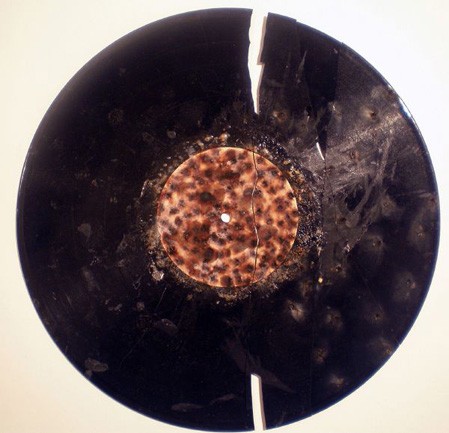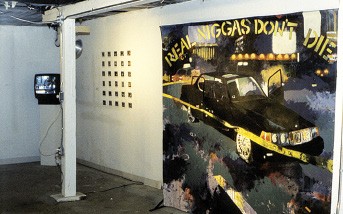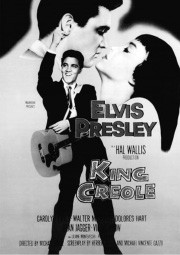Last week, Memphis-based and world-renowned producer/musical
raconteur Jim Dickinson sat at his keyboard and plunked out the notes
of Furry Lewis’ “Kassie Jones.” It was a heroic moment, considering the
rocky road Dickinson has traveled the past few months.
“In May, Dad had stents put in his heart, and he felt really good,”
recounts Dickinson’s son Luther, a well-known musician in his own
right. “Then he suffered from gastrointestinal bleeding, went back to
the hospital, and had a massive heart attack. He got better and came
home to recuperate before going in for bypass surgery. His heart
stopped, but they brought him back. It’s been a slow but steady
recovery since then.”
Friends and family, including Dickinson’s wife, Mary Lindsay, and
his younger son, Cody, are encouraged by the 68-year-old musician’s
determination to play music so soon afterward.
“At one point, he had a Sharpie in his hand and he was holding a
notepad, composing, which was just the sweetest thing. His memory and
personality are all completely there, and he’s getting his creative
process together, you know?” Luther says.
Even so, it will be a long while before Dickinson has the strength
to reenter the recording studio and command the control board, as he
has for artists such as the Replacements, Pete “Sonic Boom” Kember,
Toots Hibbert, John Hiatt, and Mudhoney — which is why his
friends hastened to stage a benefit concert, which is slated for the
Peabody Skyway Saturday, August 8th.
Hiatt will headline the sold-out event, along with Dickinson’s sons’
band, the North Mississippi Allstars, his longtime bandmate Sid
Selvidge, and Big Star drummer Jody Stephens. Also appearing are Jimmy
Davis, Shannon McNally, Amy LaVere, Jimbo Mathus, the
Yallabushwhackers, and Sons of Mudboy — all musicians who have
benefited from an association with Dickinson.
“It’s going to be a great night of music, but that’s almost beside
the point,” says event organizer David Less, who heads Memphis
International Records, the label behind Dickinson’s past three solo
albums, including Dinosaurs Run in Circles, which was released
in May.
“Memphis music would not sound the same without Jim in the world,”
Less says. “The people he has mentored and influenced on the local
scene have made a difference across musical genres, and the entire
community owes a debt to him.”
Despite the fact that a benefit was held in Oxford, Mississippi,
last weekend and another event is on the books for San Francisco later
this year, hundreds of supporters have already stepped up, donating
time and money to the cause.
Although he’s unable to attend, Elvis Costello purchased a table for
Saturday’s concert, to be auctioned later this week. The Peabody hotel
offered space, and the staffs at Ardent Records and at Beale Street
Caravan are handling ticket sales and donations. Less credits industry
insiders Bob Merlis and Bill Bentley for petitioning major labels and
recording artists — ranging from Aretha Franklin and Arlo Guthrie
to Ry Cooder and the Rolling Stones — to relinquish recording
rights for a limited-edition CD of songs Dickinson either produced or
played on, which will be distributed at the event.
“Jim’s got Medicare, so fortunately, we’re not needing to raise a
half-million dollars. He hasn’t worked since May, so we just want to
make sure he doesn’t go broke. People shouldn’t go bankrupt if they get
sick,” Less says.
With a forced layoff of two months, Dickinson can use the help.
Luther says, “Everyone is so financially fragile right now, but
being my parents’ ages and not having a stable future is really scary.
I think retirement is a mirage.”
Throughout the whole process, Dickinson has reminded his sons to
“take care of your mom and play your gigs.”
Both Luther and Cody have taken the advice to heart, substituting
for their father at what was supposed to be his May 31st CD-release
party at Huey’s and forging ahead with their respective groups, which
include the Black Crowes and Hill Country Revue.
“Music is what’s always held our family together,” Luther says.
“This [experience] is just one of those things that has made me
reevaluate what I want to do with my band. It’s proved to me how
important music is in making the world go around and how important it
is to the strength and continuation of my family.
“Waking up every morning is a blessing, and lifting your arm and
feeding yourself is a blessing,” Luther says, reiterating the words of
his late friend and frequent music collaborator, bluesman Otha
Turner.
“I pray that Dad is through the worst of it. Once he gets his
strength back, you’d better watch out.”



